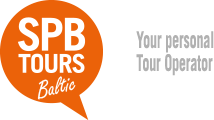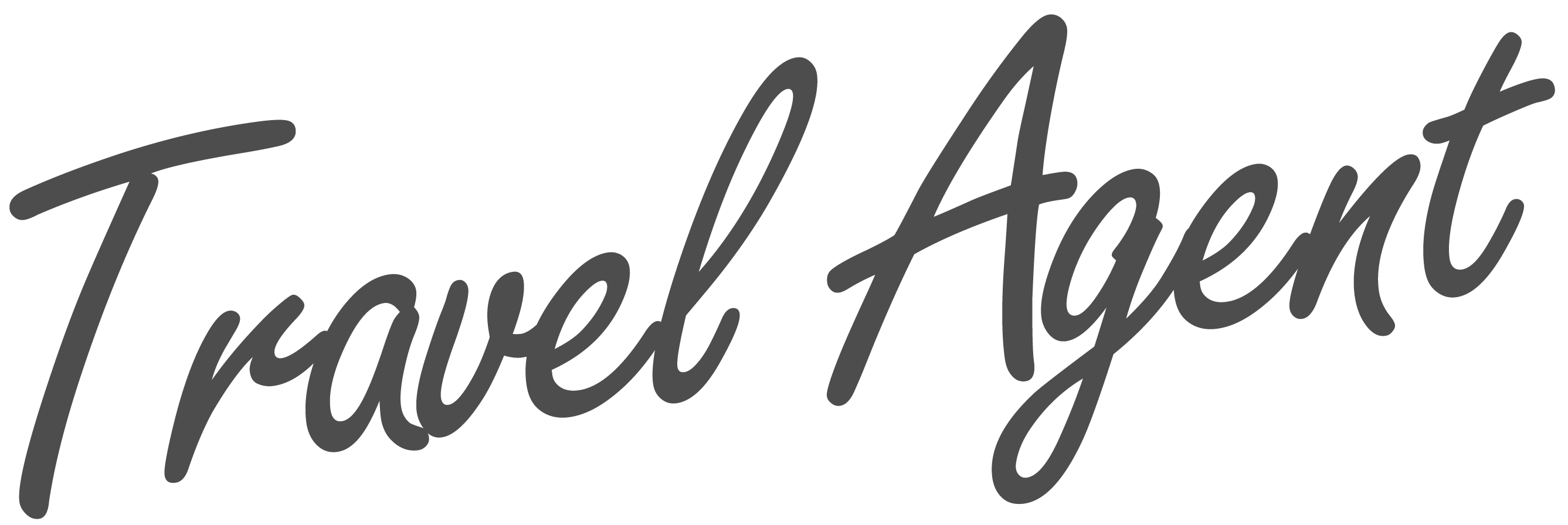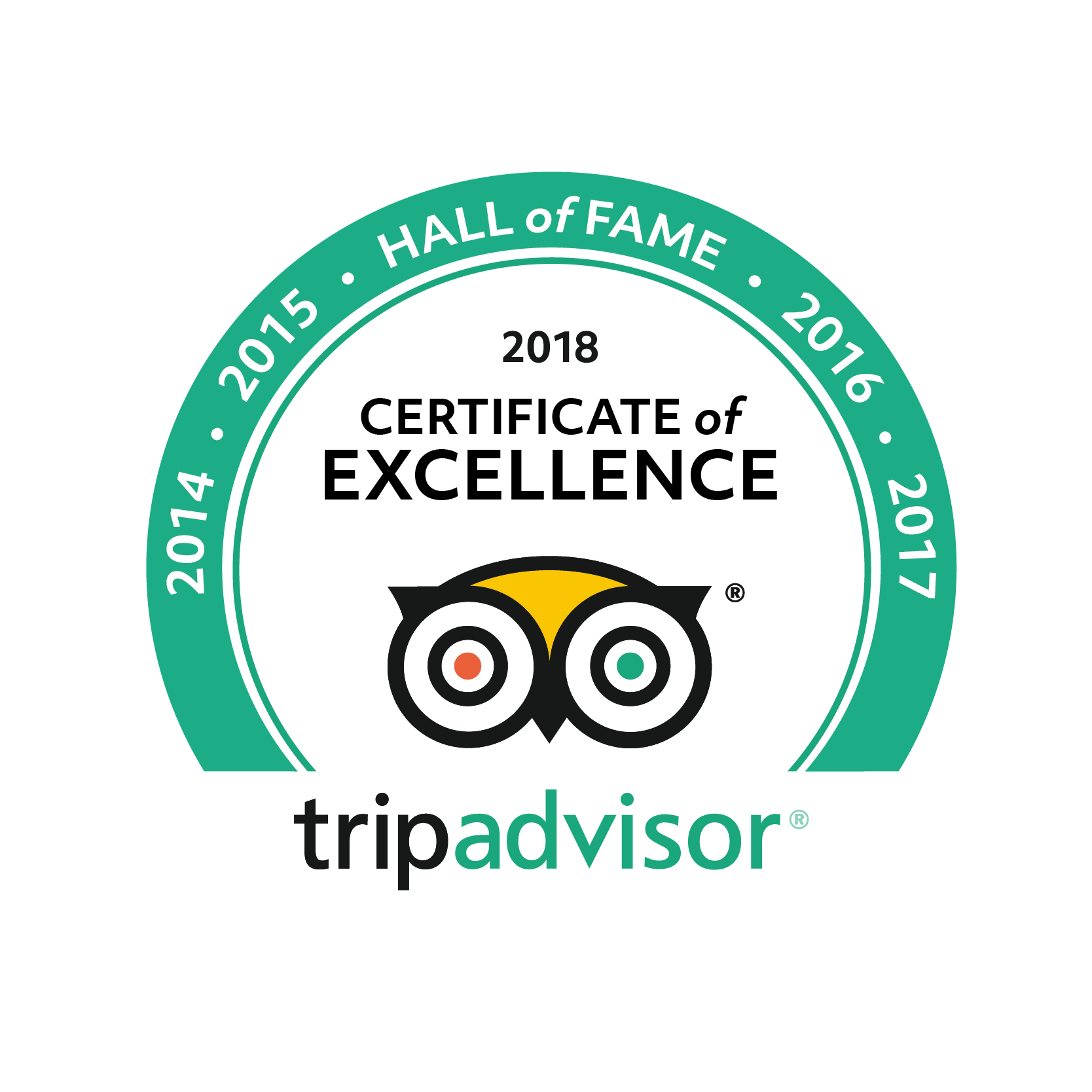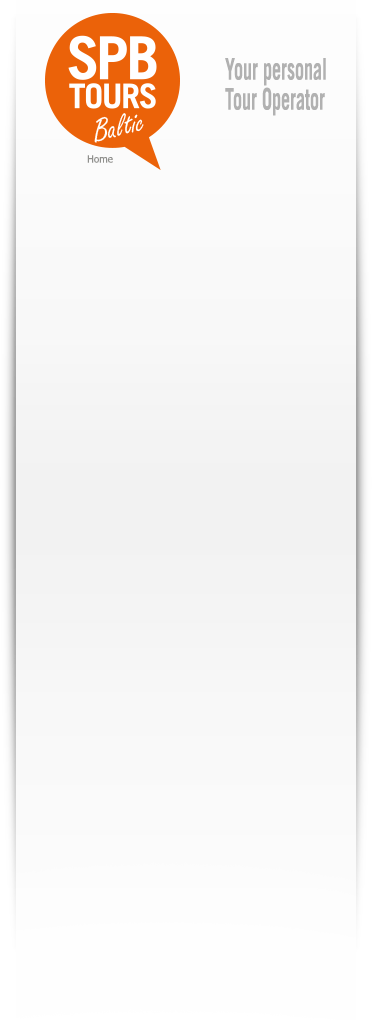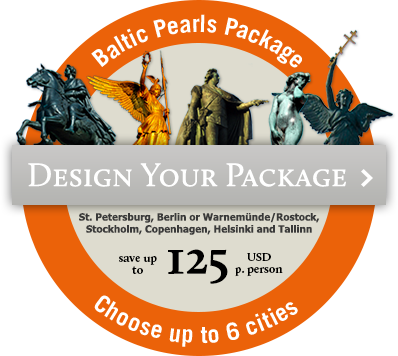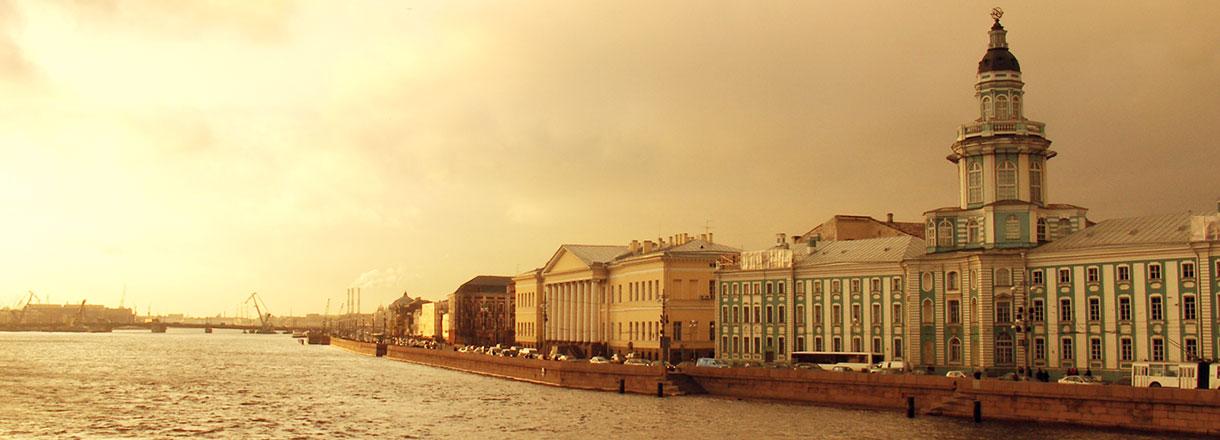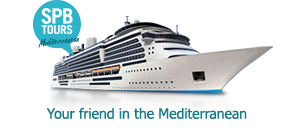- 866 reviews of SPB Tours in St. Petersburg
SPB-Tours Mediterranean
Mediterranean!
Let us help you plan the best
vacation in Spain, France,
Italy, Greece, and Turkey!

Need help or more info?
you like by email or phone if you
have any questions, wishes, or
comments concerning your trip
to St. Petersburg.
Yours,


The top 20 sights of the city sightseeing tour
All of our tours in St. Petersburg include the city sightseeing tour*, a comprehensive overview that gives a good feel of the city's layout and its most significant sites. Sights that are usually included are:
- Peter and Paul's Fortress and Cathedral (inside visit)
- The Spit of the Basil Island and Rostral Columns (photo stop)
- Senate Square/Decembrists Square and the Bronze Horseman (drive-by or optional photo stop)
- Admiralty (drive-by)
- Quay with Sphinxes (photo stop)
- Cruiser Aurora (optional photo stop)
- The Cabin of Peter the Great (optional photo stop)
- Field of Mars. Michael's Castle (Palace of Paul I) and the Trinity Bridge (drive-by)
- Summer Garden (drive-by)
- Church on the Spilled Blood (visit or photo stop depending on your itinerary)
- St. Isaac's Cathedral (visit or photo stop depending on your itinerary)
- Isaac's Square and the Mariinsky Palace, with a monument to Nicholas I - (photo stop)
- St. Nicholas Marine Cathedral (inside visit)
- Theatre Square and Mariinsky Opera and Ballet House (photo stop or drive-by)
- Yusupov's Palace (visit or photo stop depending on your itinerary)
- Nevsky Prospect (photo stop upon request or drive-by)
- Uprising Square (drive-by)
- Kazan Cathedral (photo stop upon request or drive-by)
- Catherine's Garden and The Monument to Catherine the Great (photo stop upon request or drive-by)
- Palace Square with Alexander Column, Arch of the General Headquarters and the Winter Palace (a visit to the Winter Palace, present Hermitage)
- Smolny Convent (photo stop upon request or drive-by)
*The possibility to see all 20 sights depends on the day of the week and on the traffic conditions.

Some useful facts and insights
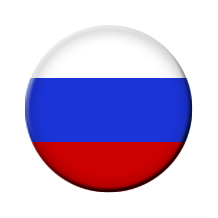
Basic data: Russia is the biggest country in the world, covering an area of more than 17 million sq km, of which 13% is developed and 51% is virgin territory. St. Petersburg is in Russia ’s Northwest Federal Region.
Population: Russia 144 million, SPb 4,6 million. Ethnic groups in Russia: Russian 81,5%, Tatar 3,8%, Ukranian 3%, Chuvash 1,2%, Bashkir 0,9%, Belarusian 0,8%, Moldavian 0,7%, other 8,1%.
Local time: Russia has 11 time zones, and St. Petersburg is in the same zone as Moscow: GMT +4 hours.
Electricity: The electrical current in Russia is 220 volts AC, 50Hz. Most sockets are standard European size with double round-pin plugs. It makes sense to bring an adapter just in case.
Rivers: The 4,400 km long river Lena in Siberia is Russia's longest river. St. Petersburg ’s river the Neva is 74 km long, 32 km of which flow within the city ’s boundaries.
The climate in St. Petersburg: Summer temperatures can vary between about 15 and 30 degrees C or 60 and 85 degrees F. Please also remember your sunscreen if you have sensitive skin, as you may well need it for protection against the blazing Northern sun (we are serious!).
Customs: If you don't carry drugs, billions of euros or weapons with you, you do NOT need to complete the Customs and Currency Declaration Statement upon arrival or departure. This applies even if your cabin crew gives you this form. Just collect your luggage and simply go to the GREEN [nothing to declare] channel.
Cash: You can bring in up to 3000 USD in cash without declaring it. ART: Anything resembling art should be cleared before departure at the Ministry of Culture: Malaya Morskaya ul., 17. tel: 571 5106.
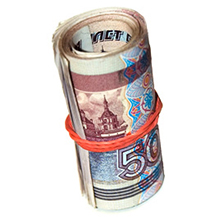
Money: The national currency is the rouble [Rbl] Banknotes come in denominations of 10, 50, 100, 500 and 1000, and there are 1,2,5 and 10 Rbl coins. There are 100 kopeks to every rouble. The value of the rouble changes by the hour, so we give you a rough indication of what you should expect to get for your Western cash: 1€= 34/35 Rbl, 1 USD = 24/25Rbl. Credit-card use is still in its infancy and not all establishments will take them, even if they have signs that say they will. Always have cash as back up! ATMs can be found at most metro stations, banks, and large hotels. FOREIGNER PRICES: The Foreigner Price is a hangover from the good old days of Intourist-organised Soviet travel. At some theatres and museums, foreigners are required to pay 6 to 20 times more than what Russians pay. These institutions insist that Russian tickets are subsidized and that foreigners pay the real price. This dual-pricing system is operating at most museums, boat trips and even some hotels.
24 hours: One of the good things about Russia is that it is never difficult to find a place to get food or drink, even in the middle of the night, whether it is a simple shop or an expensive nightclub. If you see the 24 sign, it means this place is open around the clock. Even experienced global travelers are astonished at the number of supermarkets and kiosks open all day and night long.
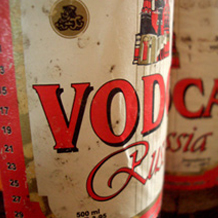
Alcohol: Stereotypes about Russian drinking habits are all true, so if you somehow find yourself enmeshed in a vodka session with locals, don't try to keep up. They've had way more practice. Vodka is cheap and there are oodles of different brands with cool labels to choose from. Russky Standard Vodka is very good. Russian pivo [beer] is good stuff too, which is why Russians consume more beer than any other alcoholic drink. Locally brewed Nevskoye, Baltika and Bochkarev are usually on tap and are a mainstay for most Petersburgers.
Restaurants: The restaurants we recommend are the ones that we have checked ourselves and which we liked. We don't get a free drink from them! Most of them you won't find in the guide-books, as they are too local: Sunduk [Russian food], Granat [Orient and European], Robin-Bobin [Russian], Orient Express [Russian and Georgian], Hermitage [Russian and European], Russian Fishing [Russian], Idiot [Vegetarian Russian], Shinnok [Ukranian], Elki-Palki [Russian], Na Zdorovje! [Russian].
Tipping: 10% is average, but it's up to your discretion. Don't feel pressure to tip if the service is atrocious. Some restaurants automatically add on a 10% service charge, so check your bill first. Tipping in other places [like to hotel staff, guides and drivers, at the cloak-room or WC in the museums] is welcome, as the average salary in Russia is very low.
Health and safety: We recommend that all visitors take the same precautions against crime in Spb as they would in any major city. Violent crime against travelers is rarer. The famed Russian mafia has bigger fish to fry than your average tourist. Like in every big city, pickpockets are a big problem and SPb is, unfortunately, no exception. Pickpockets often work in professional groups and use tricks to disorient, distract and confuse their victims. Pickpocket places are Nevsky prospect and other busy downtown streets. It can happen in the street, in the subway, in the museum, around the coat checks, and during the intermission at theatres. Watch your belongings at internet cafes or any other place where you set your things down.
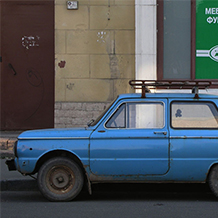
Russian Drivers are your biggest danger, so cross the road carefully, and don't assume cars will stop just because you are on a zebra crossing.
The city's water is treated with chlorine to clean it from bacteria, parasites, and heavy metals, so you can use it to brush your teeth or wash fruit. For drinking or to make tea, it is better to stick to bottled water, or clean the tap water with a filter and give it a good boil first.

Museums
Alexander Nevsky, Monastery: www.lavra.spb.ru | Church of the Saviour on the Spilt Blood, St. Isaac ’s Cathedral: www.cathedral.ru | Great Choir Synagogue: www.jewishpetersburg.ru | Peter and Paul Fortress: www.spbmuseum.ru | Kunstkamera: www.kunstkamara.ru | NavalMuseum: www.museum.navy.ru | Russian Museum: www.rusmuseum.ru | Dostoevsky House: www.md.spb.ru | Nabokov Museum: www.nabokovmuseum.org | Pushkin Museum: www.museumpushkin.ru | Pavlovsk: www.pavlovsk.org | Peterhof: www.peterhof.ru | Pushkin | Tsars ’ Village: www.tzar.ru | Hermitage: www.hermitagemuseum.org | Yusupov ’s Palace: www.yusupov-palace.ru

The history of St. Pertersburg
1703 Founding of St.Petersburg by Tsar Peter the Great [May 27 according to the Julian calendar].
1710 Peter builds the city ’s first palace, in the northeast corner of the Summer Garden.
1712 St.Petersburg replaces Moscow as the capital of the Russian Empire.
1714 Peter the Great founds the Kunstkamera, not only Russia's first, but also the world's first public museum.
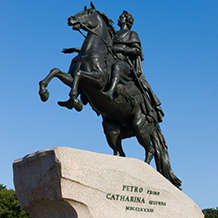
1725 Tsar Peter the Great dies aged 52.
1738 Russia ’s first ballet school is established in St.Petersburg.
1754 Empress Elizabeth commissions Rastrelli to design the Winter Palace, and over the next forty years Empresses Elizabeth and Catherine the Great create the palaces and parks in the St.Petersburg suburb of Tsarskoe Selo[Pushkin].
1757 The Academy of Fine Arts is founded.
1762 - 1796 The German-born Catherine the Great ascends the throne. She makes the Winter Palace her residence, where the royal family remain until 1917. St. Isaac ’s Cathedral [now known as Dekabristov Square].
1795 Opening of the Public Library.
1825 A secret society of nobles and officers, who come to be known as the Decembrists, rally against Tsar Nicholas I. Their uprising is crushed.
1837 Opening of the first Russian railroad, from St. Petersburg to Tsarskoe Selo.
1837 On January 27, Russia ’s most famous poet Alexander Pushkin is fatally wounded in a duel with French officer Georges d ’Anthes, who was apparently having an affair with Pushkin ’s wife.
1851 Opening of the railroad line from St. Petersburg to Moscow.
1858 The city ’s most ornate cathedral, St. Isaac ’s, is completed after forty years of construction work.
1859 The Mariinsky Theatre is built.
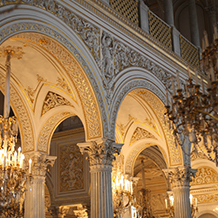
1866 Dostoevsky finishes Crime and Punishment, set in the streets surrounding Sennaya Ploshchad [Haymarket Square].
1881 A bomb kills Emperor Alexander II. The Church on the Spilled Blood is erected on the spot of the assassination.
1898 Opening of the Russian Museum.
1905 Bloody Sunday. On January 9, tens of thousands of Petersburgers march to the Winter Palace to present Tsar Nicholas II with a petition calling for reforms. Imperial troops fire on the demonstration, killing several hundred people.
1914 World War I begins in August, and St. Petersburg is renamed Petrograd to sound less German.
1916 Prince Felix Yusupov murders peasant Grigory Rasputin, a Siberian monk who had Tsarina Alexandra under his spell because of his hypnotic ability to treat her son ’s haemophilia.
1917 In a popular uprising on the night of October 24, the Bolsheviks take control of key points in around the city. The night comes to be known as the Great October Socialist Revolution. Lenin establishes the Cheka, later to be known as the KGB, now called the FSB.
1918 Tsar Nicholas II and his family are murdered in Yekaterinburg.
1918 The government moves back to Moscow; St.Petersburg is no longer the capital.
1921 Sailors at the Kronshtadt naval base become the last bastion of organised resistance to the communist regime. On March 21, 50 000 Red Army troops cross the ice from Petrograd and massacre almost the entire fleet.
1934 Leningrad ’s Communist Party Chief Sergei Kirov is murdered at Smolny in December. His death marks the beginning of Stalin's worst party purges.
1941-1945 WW II; almost 900-day siege of Leningrad [September18, 1941 to January 27, 1944]. The city is isolated from the rest of Russia. More than a million residents die.
1955 The Leningrad metro opens.
1960 The population of Leningrad finally grows to exceed pre-WW II levels.
1989 Leningrad's historical centre is put on the UNESCO list of world cultural heritage sites.
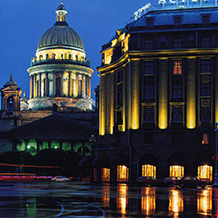
1991 Following a popular referendum in September, Leningrad is returned to its original name St. Petersburg.
2000 on March, Petersburg native Vladimir Putin is elected President of the Russian Federation.
2003 on May 27, St. Petersburg turns 300. The night of Petersburg's birthday sees more people take to the banks of the Neva than the city has seen since the anniversary of the October Revolution.
2003 Valentina Matvienko is elected as the new governor of St. Petersburg.
2004 Vladimir Putin - St. Petersburg ’s favourite son - is re-elected as president for another four years.
2005 Petersburg celebrates the 60th anniversary of the WWII Victory.
2010 Georgi Poltawtschenko is elected as the new governor of St. Petersburg.
